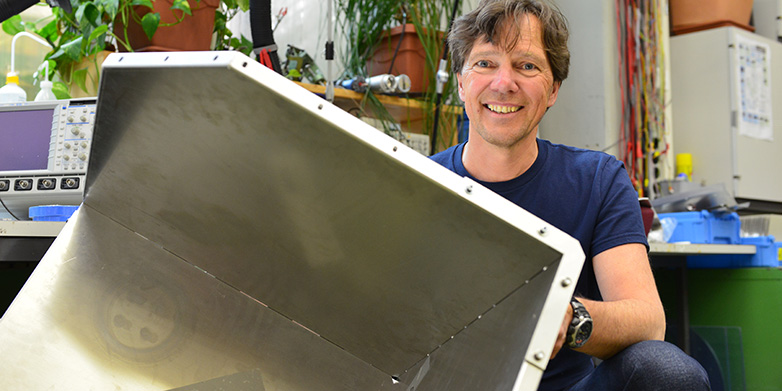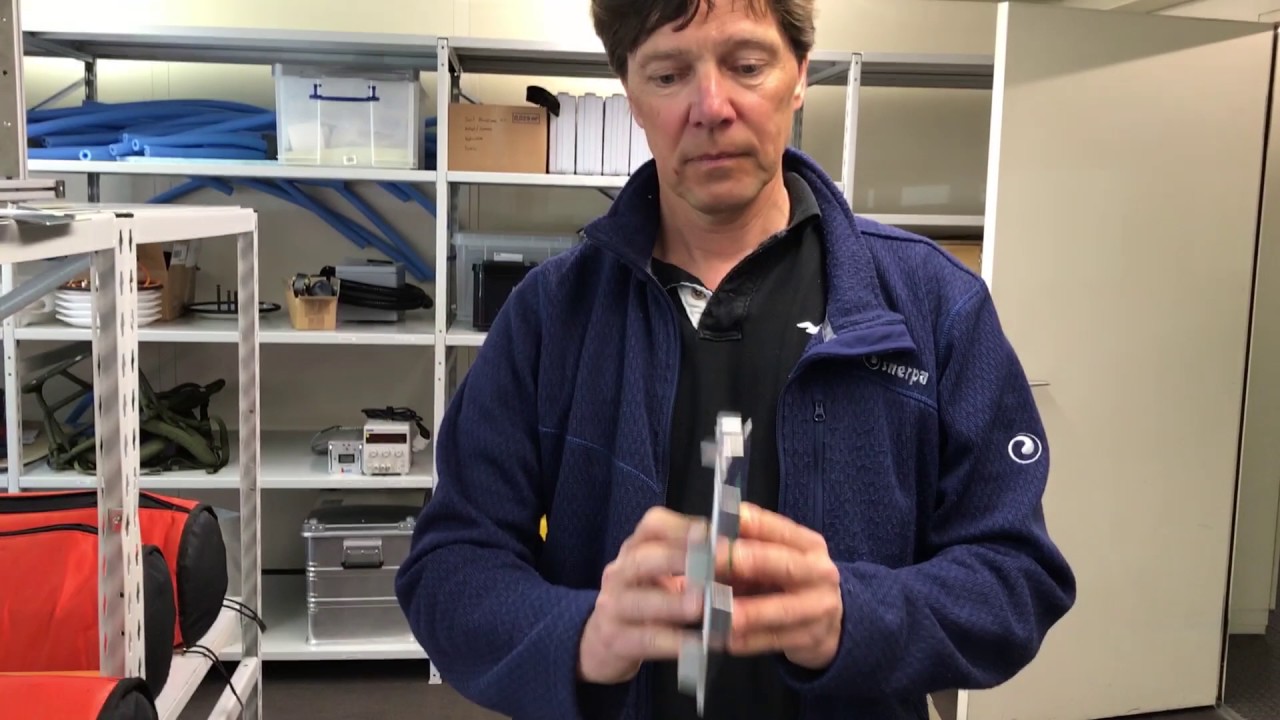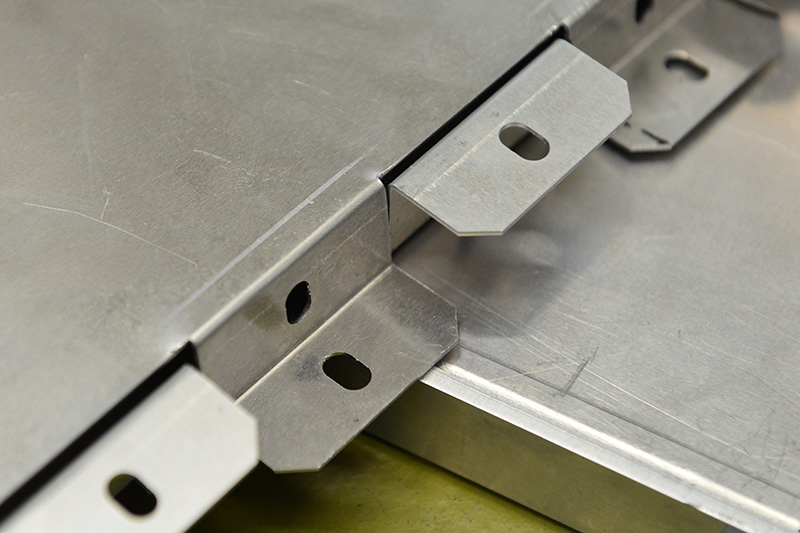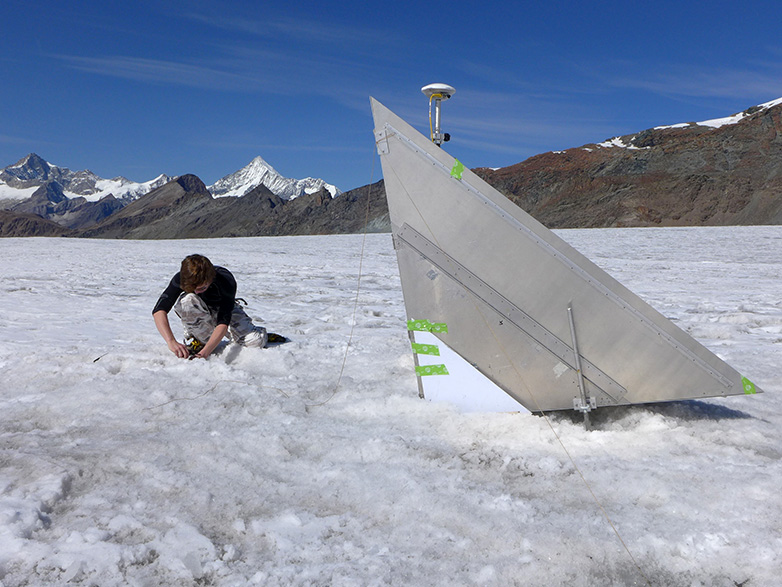Pure genius
Cornelius Senn, a measurement engineer in the Department of Civil, Environmental and Geomatic Engineering (D-BAUG), and his post-doctoral colleague Silvan Leinss have developed a new reflector for radar measurements. The underlying mechanism, however, has many possible applications and could revolutionise furniture construction, for example.

“This mechanism is so clever it should be patented,” Cornelius Senn thought to himself on numerous occasions. The measurement and electrical engineer in the Department of Civil, Environmental and Geomatic Engineering (D-BAUG) is a frequent inventor and builder of devices that make life easier for researchers in the department. And this time it’s probably not just idle chatter.
He has filed a patent application for a mechanism that enables the stable connection of panels – made of metal or Plexiglass, for example – without screws, but instead held together by angled blades, a type of gearing. It is difficult to describe, but is much easier to understand with a visual aid (see video).

We would like to help, but sorry
It all started with a “No”. Senn declined when he was approached by a doctoral student asking for help with the development of a reflector for radar measurements. These types of reflectors are placed in snow and ice, for example, to generate elevation models. In locations with known coordinates, they serve as reference points. They are also required to adjust the focus of radar. The radar images can then be used to determine the flow velocity of glaciers and landslides in the millimetre range.
“When I saw the reflectors, which were made of different materials and were also loose and heavy, I said: ‘I won't build this; it won’t work’,” Senn recalls. And he immediately set out to develop an alternative. So the question arose as to whether he could drill through the reflector in order to screw it to the support, or whether this would interfere with the measurements. Maybe, or maybe not – no one really knew for sure. That is until Silvan Leinss, a post-doctoral student in the group led by Irena Hajnsek, Professor of Earth Observation and Remote Sensing, came along. As a physicist, the answer was clear to Leinss: “Our radar uses a wavelength of several centimetres. Anything smaller will not affect the measurement.”
Two inventors meet and inspire each other
However, like Senn, Leinss wanted to know for sure. He had previously carried out field trials with the existing reflectors and climbed hundreds of metres up mountains while carrying a 40-kg pack. In Greenland, he had even sawn off the corners of a reflector to fit it on the plane – knowing full well that the reflection of the waves at the corners would be lost anyway. Do the reflectors really have to be so heavy and unwieldy? Is there a way to assemble them on-site, even in sub-zero temperatures? What would be the ideal shape? The two inventors set out to find the answers to these questions, throwing ideas back and forth.
Leinss carried out tests with screws and applied aluminium foil to sheet metal. The results: single screws do not affect the measurements, nor do the reflectors have to be particularly thick, but thinner reflectors require more and shorter screws. “Once you’ve put together this kind of reflector, you won’t take it apart again and you certainly won’t assemble it in the sub-zero temperatures you find in places like Greenland,” says Senn from experience. He eventually abandoned the idea of using a “piano hinge” – a metal strip with numerous small screws: “If dirt gets in, it ruins it.” In addition, it is made of a different material than the metal sheeting, which could lead to electrolytic corrosion.
A simple solution, but hard to describe

So Senn thought about a better solution and developed his interlocking system, which he illustrates with his hands. “When I put the idea down on paper, I suddenly began to doubt whether it would truly work,” he recalls. So he headed to the workshop, where he built a model and found that it did indeed work. And now he hears the inventor’s maxim for patents more often: Leinss was delighted, as was his boss, Hajnsek, who then began the search for funding for a prototype. The patent issue, however, was made tangible by the company that built the prototype, when the company owner inquired about it. “We’re working on it,” replied Senn, who then contacted ETH transfer, the technology transfer centre at ETH, where the idea was also met with excitement by Stefan Lux.
Enthusiasm notwithstanding, nearly everyone who saw the mechanism said they had seen it somewhere else already. But where exactly? What exactly? Even the patent office was certain that this kind of mechanism was already registered. The officials spent a day searching, but they were unable to find anything quite like it after all. The next task was to draft the patent document, which was not easy, since it was not simply a matter of patenting the reflector but rather the mechanism used to join the panels. And this idea is so simple that it is extremely difficult to describe.
Big potential
A whole host of possible applications. In addition to reflectors, it might be possible to build bookshelves, cabinets and other furniture this way. The mechanism might also be suitable for roof structures. Senn has many ideas and he’s already built models for some. “But it takes time to develop them – and find an actual application,” he explains. This is why he welcomes new sparring partners at ETH, with whom he can work to develop further products that incorporate the mechanism into their design. Of course, hopes are high that companies outside ETH will show interest in the application.


